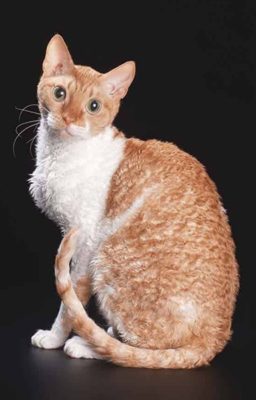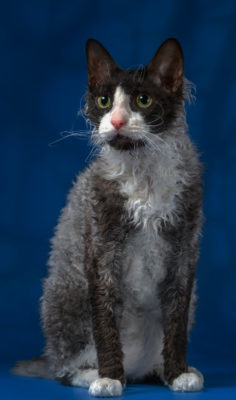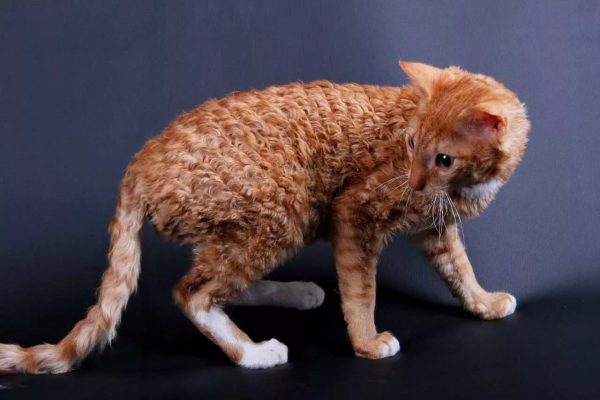Ural Rex Shorthair

The Ural Rex Shorthair is an affectionate and friendly family member. It is very attached to its owner and does not tolerate loneliness. Therefore, it will not suit a person who is constantly missing at work. About the Ural Rex Shorthair, they say that he is gentle and tolerant absolutely to everyone. It concerns both strangers and other pets. Also, the Ural Rex is not aggressive. With children of any age perfectly will find a common language.
Table of Contents
Breed Information
| Origin | Russia |
| Size | Males 26-27 cm Females 25-26 cm |
| Weight | Males 4-6 kg Females 3-4 kg |
| Fur Type | Short-haired |
| Color | Any color variations are possible |
| Lifestyle | Outdoors, indoors |
| Lifespan | 12-16 years |
| FIFe Classification | – |
| WCF Classification | Group 3: “Short-haired” Breed designation – URS |
| TICA Classification | – |
| Group | Short-haired cats |
| Price | $300-800 |
Breed Photos
Origin History
References to the Ural Rex Shorthair date back to the first half of the twentieth century. Then these quirky curly cats conquered the hearts of people living in the villages of the Urals. Ural Rexes were especially common in the Urals since 1940 and during the postwar period. Because of the war, the distribution of the breed decreased sharply.
The Yekaterinburg kennel subsequently restored the Ural Rex population. The breed remains sparse. It is common in its homeland but almost unknown outside it. The main mass of the breed is located in the Sverdlovsk region. Ural Rexes in Kolomna, Perm, Moscow, Irkutsk, Sevastopol, Volgograd, St. Petersburg, Rostov-on-Don, and Dresden.
The first registered representative of the breed was a cat named Vasily. He was born in the city of Zarechny in 1988. The breed received a detailed description in 1991. Then the Ural Rex Shorthair attracted the attention of felinologist Olga Mironova. Since 1997, Moscow cat associations have been working on the breed in various ways to determine the curl gene. Only by 1999, the Ural Rex Shorthair was registered as a separate breed. The WCF International Cat Association approved the breed standard in 2006.
Appearance
The breed standard of the long-haired and short-haired Rex is almost identical. The only differences are in the structure and length of the coat. The short-haired Rex has a somewhat shorter coat and does not form too fluffy a mane. Elastic and unusual curls are the breed’s calling card.
Interestingly, the curl gene appears much earlier in Rexes than in other cats. Curls become structured by the third month of a kitten’s life. Also, the mutation gene of Ural Rex is considered unique. Crossing the breed with Cornish and German Rexes did not yield results. Kittens were born with straight hair.
Representatives of the breed do not belong to the number of big cats. The Ural Rex Shorthair is a medium-sized cat with a well-proportioned and harmonious build. The head is triangular, with smooth lines. The muzzle is small, the cheekbones and the transition from the forehead to the nose are well pronounced. The ears are medium in size, set high, and straight. Oval eyes look slightly slanting. The eyes have an attentive look. The color of the eyes may be of any color. The tail is straight, thin with well-developed curly hair.
The hair of the Ural Rex is short and fine. There is a unique curl and waves. The standard color is allowed. The most common colors are cream, black, tortoiseshell, golden, and tabby. The standard does not allow straight hair and too long thin body.
Character
The Ural Rex Shorthair is an affectionate and friendly family member. It is very attached to its owner and does not tolerate loneliness. Therefore, it will not suit a person who is constantly missing at work. About the Ural Rex Shorthair, they say that he is gentle and tolerant absolutely to everyone. It concerns both strangers and other pets. Also, the Ural Rex is not aggressive. With children of any age perfectly will find a common language.
Ural Rexes are non-competitive and contactable. They adapt well to any home environment. They love the attention of the owner but are not intrusive. They will quietly wait for you from work and then happily lounge on the couch.
Care
Grooming Ural Rex Shorthair is not complicated. During molting periods, it is worth combing out the curly pet every few days. During normal times, once a week will be enough.
Representatives of the breed have delicate skin, so frequent water procedures are not welcome. The Ural Rex should be bathed infrequently when dirty. Ears and eyes should be examined systematically and checked for inflammation. Claws should be trimmed every 10-12 days.
Education
The owners of the Ural Rex Shorthair note its high level of intelligence. It is also quite curious and active. These curly-haired friends quickly remember and comply with the owner’s requests. You will have no problems in accustoming the pet to the litter box or teaching simple commands. Also, Ural Rex Shorthair is very fond of a variety of toys. So in the absence of the owner, it is easier for them to endure loneliness.
Common Diseases
Heredity and genetics in Ural Rexes are normal. No serious diseases have been identified. They are not at risk of various pathologies and have a strong immune system. With proper care, they can live more than 16 years.
Nutrition
Ural Rexes are quite unpretentious in their choice of food. A diet consisting of natural food will do, as well as ready-made dry food. The most important thing is not to mix the two types of feeding. It is detrimental to the health and digestive system of the pet.
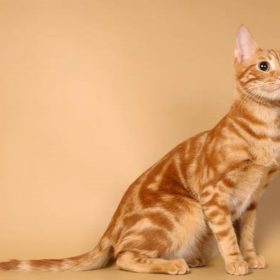 Anatolian Cat
Anatolian Cat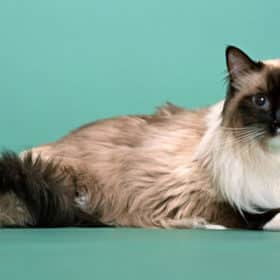 Ojos Azules Longhair
Ojos Azules Longhair Cornish Rex
Cornish Rex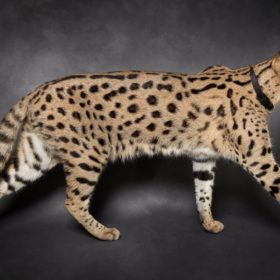 Savannah
Savannah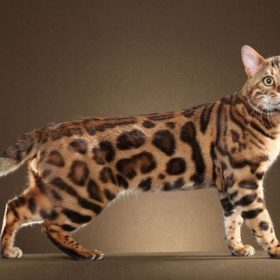 Bengal Cat
Bengal Cat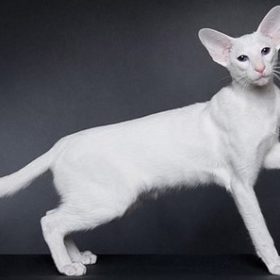 Foreign White
Foreign White